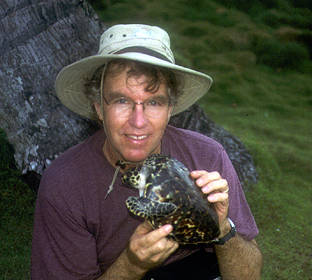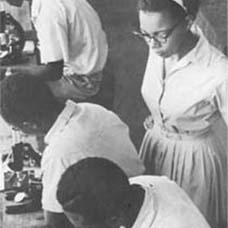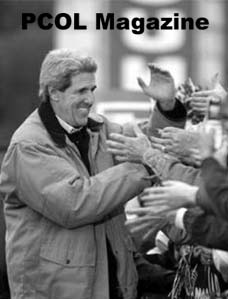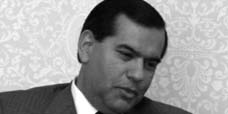
Gordon Frost, who spends some five months of each year in the interior of Guatemala, first became fascinated, then "Hooked," on the handcarved wood and painted masks while he was a member of the Peace Corps
Masks Blend Values of Spain, Guatemala
By Betje Howell
Herald-Examiner Art Critic
Masks are found in every culture -- those worn by actors in ancient Greece, the ceremonial masks of the tribes along the Ivory Coast in Africa, the grotesque false faces of modern carnivals -- all represent man's continuing preoccupation with personal transformation, his relation to his gods or society.
Today, ethnic masks are regarded as art or artifact and very collectible objects. But the continuing folklore of ritual masks and ceremonies reaches an apex in Mexico and Central America.
Due to the inaccessibility of the primitive villages that still exist in Guatemala, little has been recorded of the extraordinary, imaginative variations to be found in the masks made and used by the Indians in that area.
A remarkable survey of Guatemalan dance masks may be seen at the Southwest Museum, 234 . Museum Drive, Highland Park. Museum director, Dr. Carl Dentzel, has written the foreword to Gordon Frost's "Guatemalan Mask Imagery," publication that will interest scholars and aficionados of the mask as an art form. Illustrated by Pok Chi Lau, the publication is included in the museum's series.
Frost, who spends some five months of each year in the interior of Guatemala, first became fascinated, then "Hooked," on the handcarved wood and painted masks while he was a member of the Peace Corps. Today his collection is considered one of the largest and most selective in America or abroad.
"The dance masks are not art objects to the Indians," notes Frost. "They are first looked upon as utilitarian. We are the ones that look upon the masks as an art form."
Each mask has a unique and distinct style, although regional centers where they are found may be only 25 miles apart. Each village or pueblo has a particular style of dress. Masks are made by a number of Indians or in a "costume' house.'' the masks also reflect the village in which they were created and are rented to Indians for ritual dances.
Dances are taught and practiced under the direction of a "dance captain" or "maestro," who travels between the pueblos. The rituals are basically spiritual, not entertainment-oriented. They are a blend of Spanish conquest happenings, Catholic indoctrination and native religion, directed to a local saint/statue or icon.
"Anthropologically speaking," Frost says, "Guatemala is being gradually opened. The Indians have had very little communication with the outside world. This results in an extraordinary variety of interpretations within an art form."
Dancing was introduced by the Spaniards to replace pagan ritual, to break old traditions and establish a new order. Masks are usually made for a particular dance, though a mask may be interchangeable for achieving a certain effect.







